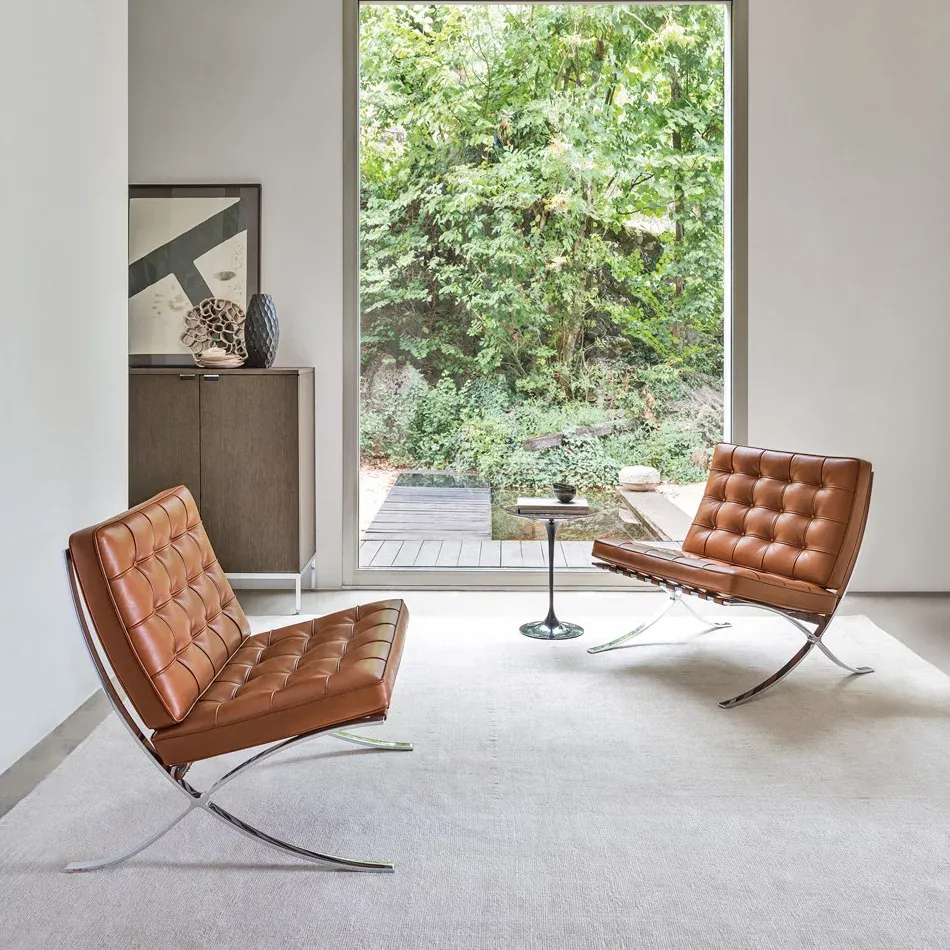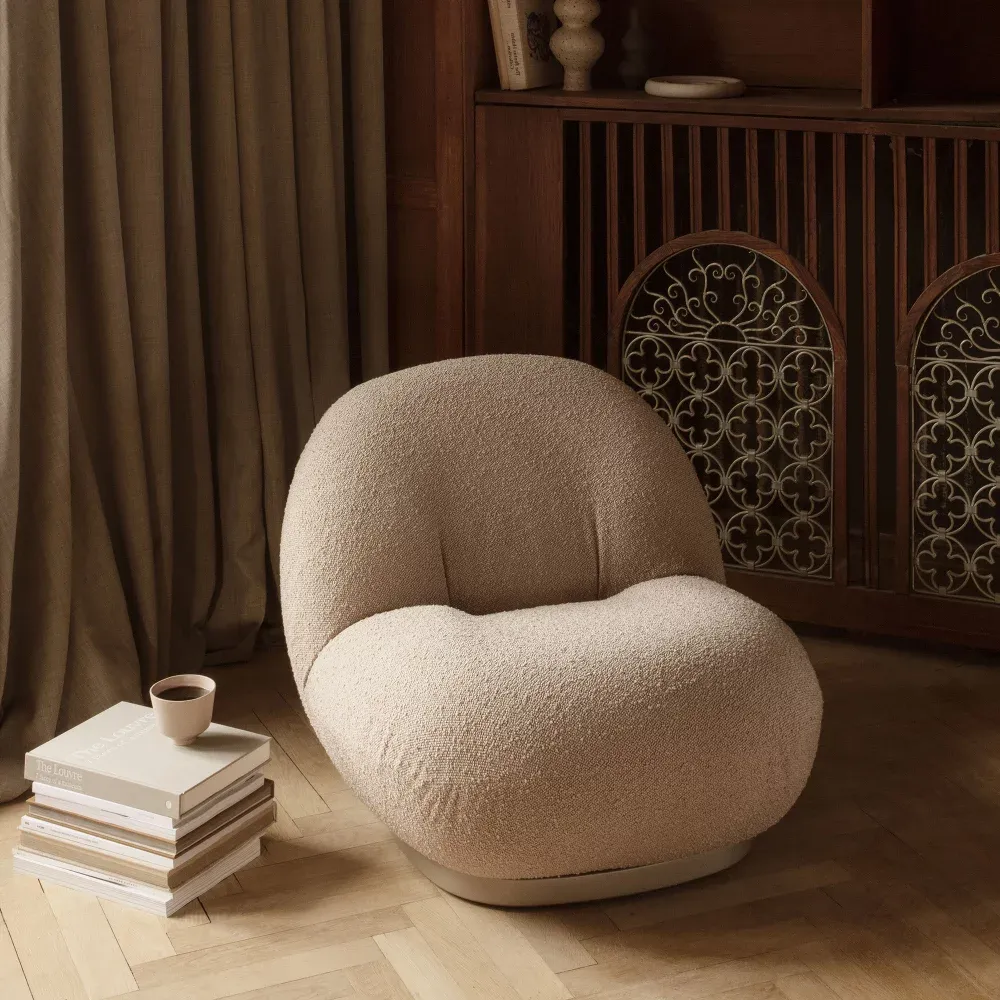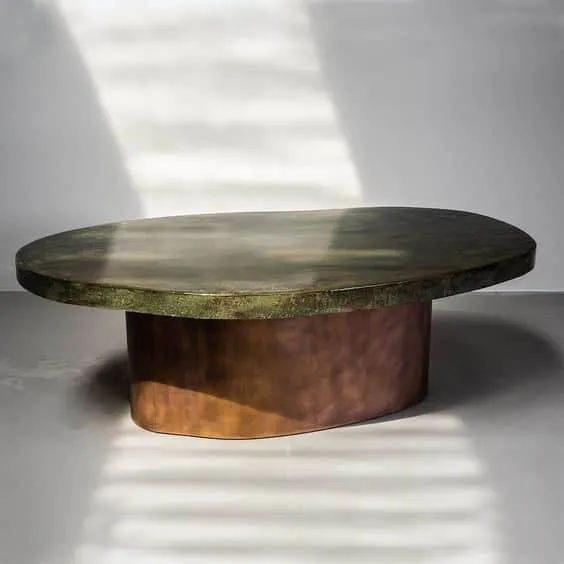There can be your advertisement
300x150
Iconic Designer Chairs You Should Know
What is an iconic chair? Recognizable among all, they have endured decades without a wrinkle. Cult designer chairs emerged from the talent and avant-garde of renowned designers and architects. Between technical mastery and bold forms and colors, discover iconic chairs and their origin stories.
Berlin Chair by Ludwig Mies van der Rohe
 Pinterest
PinterestCreated for the Spanish royal couple in connection with the opening ceremony of the German pavilion at the World Exhibition in Barcelona in 1929, the Berlin Chair combines graceful curves and monumental lines. Inspired by the classic shape of folding chair legs, Ludwig Mies van der Rohe designed the Berlin Chair as a throne of modernity. And for good reason—the main feature of this iconic chair lies in the harmonious combination of seat and backrest with gently curved X-shaped legs that give it a stunning lightness. Considered an icon of 20th-century design, this chair remains a coveted object almost 90 years after its creation.
Pacha Chair by Pierre Paulin
 Pinterest
Pinterest
This is a design classic, living up to its name. With its airy appeal and cozy comfort, the Pacha Chair embodies all the obsessions of its creator Pierre Paulin. In 1975, French designer presented this cornerless and legless seat whose silhouette seems borrowed from sculpture. A symbol of a new era, charismatic Pacha was elevated to the status of "timeless modern." Returned in 2018 by Danish company Gubi and supported by the movement of the seventies that modern interiors love, it became a big success, especially in its curly hair version. Thanks to this resurgence on the design stage, the whole Pacha family (Pacha sofa, Pacha side table, Pacha chair) took up their summer apartments.
Diamond Chair by Harry Bertoia
 Pinterest
Pinterest
It has endured six decades without a wrinkle. In 1952, Italian designer Harry Bertoia worked with Knoll and experimented with flexible metal rods, creating functional sculptures. The result was a collection of chairs that became today's icons of design. With its diamond-like form and rod legs, the Diamond Chair became one of the lightest chairs in furniture history but also one of the best-selling. Following this immediate success, Harry Bertoia decided to fully dedicate himself to his first passion: sculpture. It was precisely through these chairs with geometric forms and daring techniques that the Italian designer turned modernity upside down.
More articles:
 Create a Clean and Cozy Oasis in Your Bathroom
Create a Clean and Cozy Oasis in Your Bathroom Create a Peaceful Retreat with Modern Maritime Style Bedroom
Create a Peaceful Retreat with Modern Maritime Style Bedroom Create a Cozy Autumn-Style Bedroom with Stylish Furniture
Create a Cozy Autumn-Style Bedroom with Stylish Furniture Create a Peaceful Oasis with Organic Coffee Tables in the Living Room
Create a Peaceful Oasis with Organic Coffee Tables in the Living Room Creating the Perfect Kitchen Layout with a Block
Creating the Perfect Kitchen Layout with a Block Create Space Efficiency with Wall-Mounted Tables for Modern Living
Create Space Efficiency with Wall-Mounted Tables for Modern Living Create the Perfect Retreat in a Thoughtfully Designed Home
Create the Perfect Retreat in a Thoughtfully Designed Home Creating the Perfect Child's Room with Dreamy Bed Designs
Creating the Perfect Child's Room with Dreamy Bed Designs